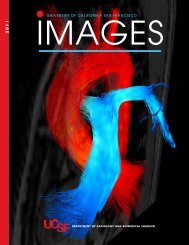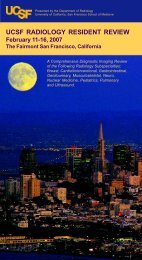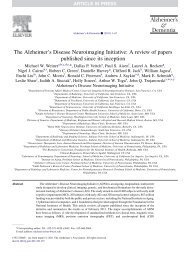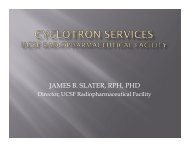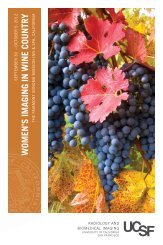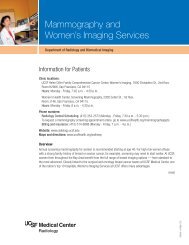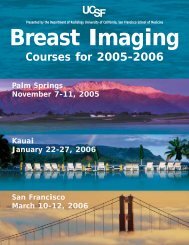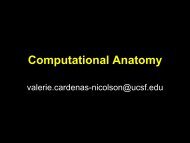6th International Workshop on Breast Densitometry and Breast ...
6th International Workshop on Breast Densitometry and Breast ...
6th International Workshop on Breast Densitometry and Breast ...
- No tags were found...
You also want an ePaper? Increase the reach of your titles
YUMPU automatically turns print PDFs into web optimized ePapers that Google loves.
6 th <str<strong>on</strong>g>Internati<strong>on</strong>al</str<strong>on</strong>g> <str<strong>on</strong>g>Workshop</str<strong>on</strong>g> <strong>on</strong> <strong>Breast</strong> <strong>Densitometry</strong><br />
<strong>and</strong> <strong>Breast</strong> Cancer Risk Assessment<br />
COLLAGEN ALIGNMENT SURROUNDING BREAST TUMORS FACILITATES TUMOR<br />
SPREAD AND METASTASIS<br />
Suzanne M. P<strong>on</strong>ik 1 , Kristin M. Riching 1 , Kevin W. Eliceiri 1 , Paolo P. Provenzano 2 , Patricia J. Keely 1<br />
ABSTRACTS FOR SPEAKERS<br />
1 Laboratory for Cellular <strong>and</strong> Molecular Biology <strong>and</strong> UW Carb<strong>on</strong>e Cancer Center, University of<br />
Wisc<strong>on</strong>sin, Madis<strong>on</strong>, 53706; 2 Department of Biomedical Engineering <strong>and</strong> UMCCC, University of<br />
Minnesota, Minneapolis, 55455<br />
While mammographic density has been correlated to increased risk of breast cancer in several studies,<br />
relatively little is known regarding the mechanisms by which mammographic density c<strong>on</strong>tributes to risk.<br />
Using mouse models of increased collagen in the c<strong>on</strong>nective tissue stroma, we find a causal link between<br />
increased stromal collagen <strong>and</strong> increased formati<strong>on</strong> of mammary tumors. Tumors that arise in dense<br />
collagen are more invasive <strong>and</strong> dem<strong>on</strong>strate dramatic changes in gene expressi<strong>on</strong> compared to tumors that<br />
arise in n<strong>on</strong>-dense mammary tissue. At the structural level, we find that mammary tissue has n<strong>on</strong>-aligned,<br />
curly collagen fibers that are altered during tumor progressi<strong>on</strong>.<br />
These changes, termed Tumor Associated Collagen Signatures (TACS) manifest as a c<strong>on</strong>sistent<br />
progressi<strong>on</strong> from increased unaligned collagen (TACS-1), to straight collagen fibers (TACS-2) to straight<br />
collagen fibers aligned perpendicular to the tumor/stromal boundary (TACS-3). Mechanistically, TACS-3<br />
collagen provides a “highway” <strong>on</strong> which tumor cells are able to migrate out from the tumor <strong>and</strong> invade<br />
into distal sites. TACS-3 signatures correlate to increased metastases in mouse models. In mouse models,<br />
similar rearrangements of collagen are also observed at the sites of lung metastasis, suggesting the<br />
collagen rearrangements facilitate not <strong>on</strong>ly spread, but also survival in metastatic sites. Importantly,<br />
collagen structural changes are also found in human breast cancer: analysis of 203 archived samples from<br />
patients with invasive breast cancer dem<strong>on</strong>strates that the presence of TACS-3 collagen significantly<br />
predicts increased relapse.<br />
Thus, TACS-3 collagen represents a potential biomarker. Current work is investigating ways that<br />
collagen changes can be targeted to better treat breast cancer in women with dense breast tissue.<br />
16



